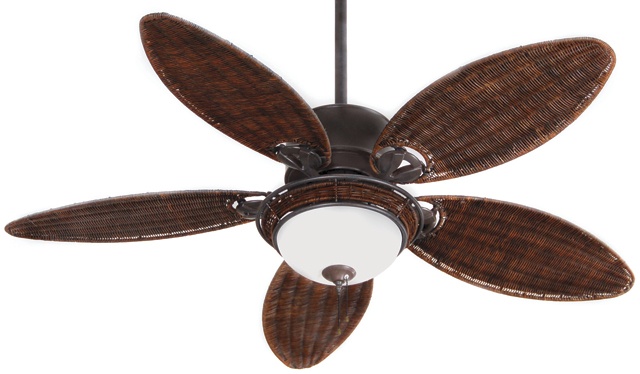If the warm spring weather tempts you to turn on your air conditioning too early, don’t do it.
Reach for your ceiling fan instead. Ceiling fans can make a room feel cooler, and they use 90 percent less energy than an air conditioner.
If you’re looking into getting a new ceiling fan, answer these five questions:
1. How big is your room? The bigger the room, the longer the blades should be. A rule of thumb: For a room smaller than 100 square feet, such as a bathroom or laundry room, buy a fan with 32- to 36-inch blades. For a medium-sized bedroom, office or kitchen—up to about 225 square feet—you’ll need a fan with blades measuring 42 to 48 inches. Large master bedrooms and dining rooms up to 485 square feet: 50- to 56-inch blades. Large rooms such as a living room—up to around 600 square feet: 60 inches or more.
2. What style and color do you like? Fan blades come in painted colors, metallic coatings and wood finishes so you can match them to your furniture, floor or even cabinet hardware. Some manufacturers make two-sided blades so you can flip them when you’re in the mood for a new look.
3. How high is the ceiling? For the most comfortable results, install the fan 7 to 8 feet from the floor. If your room has a high ceiling, buy an extension downrod to lower the fan to the ideal location. Some manufacturers have special close-mount fans for rooms with extra-low ceilings.
4. Do you want to combine the fan with a light? Most manufacturers will double them up for you. Fixtures with downlighting create a traditional effect, while those with uplighting will bounce the light off the ceiling to diffuse the light and make it softer. If you do opt for lighting with your fan, be sure to look for the Energy Star label for the light. Energy Star-qualified units are more than 50 percent more efficient than conventional units and can save you money on your utility bills.
5. How do you want to operate the fan? You can pull a cord, flip a light switch or tap a remote control.
Now that you’ve picked the perfect fan, be sure to use it wisely. In the summer, run the blades to push air downward to create a cool breeze. If you raise your thermostat by only 2 degrees and use your ceiling fan, you can lower air-conditioning costs by up to 14 percent over the course of the cooling season. And remember: Ceiling fans cool only people, not the room, so when you leave the room, turn the ceiling fan off.


